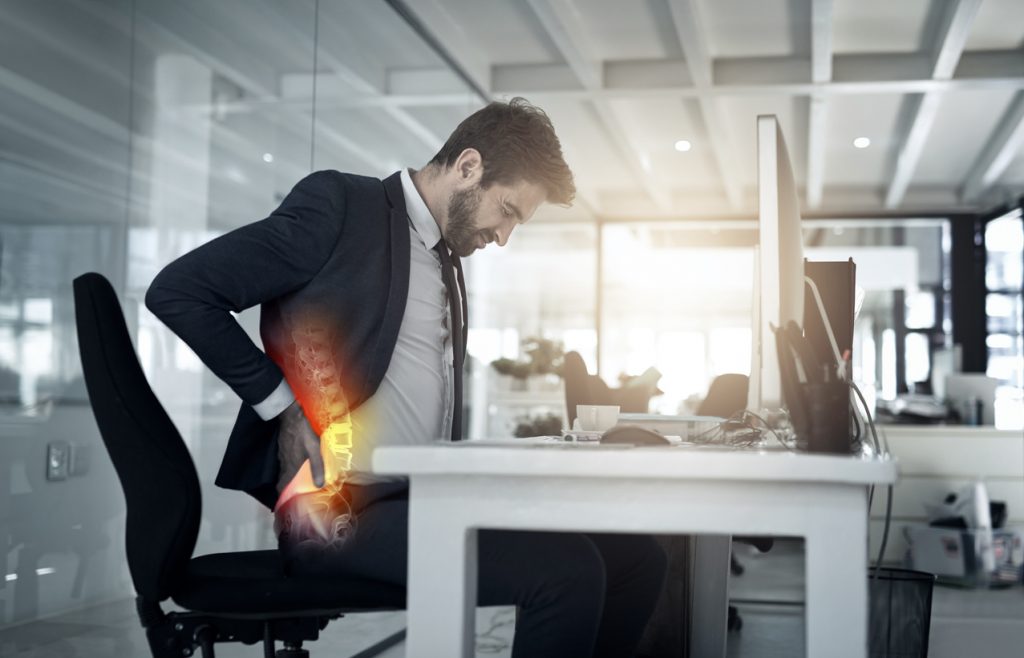Back pain is the largest cause of disability in the UK and specifically, lower back pain (LBP) accounts for 11% of all disability in the country (NHS 2016) making it something that we see everywhere, be it:
- personally (you have it or have had it)
- at home (family, friends, flatmates, probably your pets as well)
- at work (colleague’s worsening pain from sitting all day; worsening pain from being on feet all day; someone just looking for something to complain about at the ‘water cooler’)
About 80% of us will experience lower back pain at some point in our lives and nearly 43% are estimated to have ‘chronic’ lower back pain, lasting over three months. I write this blog post with a bit of an ache as I start to think about my back!
What is the most effective way to deal with LBP?
Time and time again, with all the research and anecdotal evidence reviewed over the last couple of decades, exercise comes out as one of the (if not the #1) most effective ways to relieve lower back pain as guided by a Physiotherapist in an appropriate and safe manner.
Once instructed appropriately, it is the most affordable, time efficient and valuable option that can be done at home, alone in the gym or if you are one of my patients, waiting for your tube/uber/bus to arrive. But why do we do it? Just because a physio told you to?
Why is exercise good for us and why does it reduce pain?
We all know that we should exercise. We should all know that we should exercise for lower back pain. But the factors or benefits involved with exercise, other than changes in “strength and flexibility” are overlooked or not discussed as often as they should. The European Spinal Journal (2012) highlighted that LBP is multifactorial and is not just changes in the muscles and the skeleton; this blog post aims to give an idea of what else happens to us when we exercise.
Please note this is in relation to non specific/mechanical based symptoms where serious pathology and diagnoses have been ruled out by a professional.
What happens within our bodies when we start to exercise and move better?
- Physiology changes – blood flows / the nervous system moves and changes at a local level
- Descending inhibition – opiod changes within the brain / serotonin activated (THE GOOD STUFF/’drug cabinet’ in the brain starts to change for the positive)
- Altered beliefs/perception – initially, exercise is tough but it gets a hell of a lot easier, once we stop worrying and stop setting up to fail by staying on the couch for hours.
- Physical strength/load tolerance – we move better and cope with more when we exercise correctly but this is overlooked at times. “The pain might feel similar, but you’re doing twice as much” – this can sometimes be a good thing!
- Social / Environment – an increase in exercise reconnects us with the world – whether seeing familiar faces at the gym, being in the fresh air in a park or being part of a sports club
- Predicted Expectations – improved perceptions of self / confidence and internal locus of control
- Changes in Corticol/Brain Networking – improved functioning of the brain, for example, the motor cortex can lead to improved output and reduce pain controlling signals
- Distract – it’s good to focus on something other than pain! (can be helpful to stop pain)
- Stress/autoimmune changes – cellular changes within the brain can improve skin / bodily functions / anxiety states / inflammation – which all affects pain
When we start to look at what happens within the body, we start to realise how powerful exercise can be for pain, for our health and wellbeing. If you have Lower Back Pain (or have had LBP), or know someone that does, safe and appropriate exercise can do the world of good – now you can start to explain why!
For more information, you can also view our health guide’s section on back physio. To get in touch with us, call 020 7603 0040 and learn about how our physiotherapists could help improve your LBP.
Author: Martin Campbell

